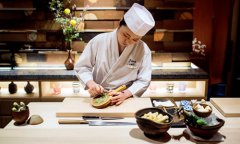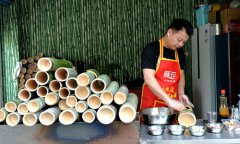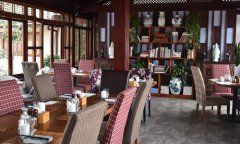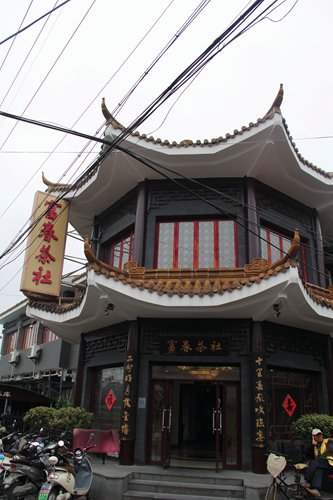
Fu Chun Teahouse for morning tea in Yangzhou, East China's Jiangsu Province Photo: Wang Qi/GT
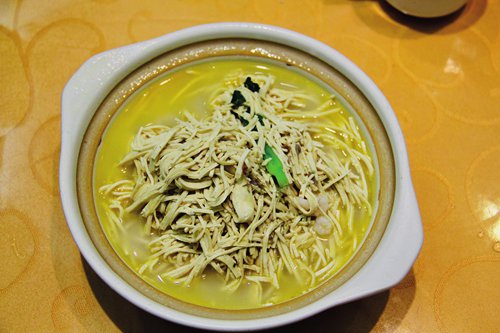
Shredded tofu Photo: Wang Qi/GT
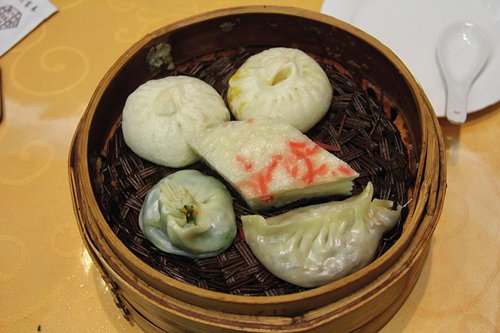
Yangzhou steamed buns Photo: Wang Qi/GT
When was the last time you sat down and had a nice breakfast?
While there are some people who still take time out to enjoy a traditional breakfast, for many, the fast pace of modern life, especially in big cities, has turned the morning meal into a rush to scarf something down while waiting for the bus or subway.
When it comes to the weekends, when we have more time to enjoy our meals, breakfast has to be tasty enough to make it more appealing than sleeping in after five days of hard work.
Fortunately, Yangzhou, an ancient city in East China's Jiangsu Province, has what it takes to make people fall in love with breakfast again.
As one of the homes of Huaiyang cuisine, one of the eight major Chinese cuisines, Yangzhou has absorbed flavors from both Northern and Southern China to enrich its local dishes.
Nowadays, locals in Yangzhou still like to enjoy zaocha, or morning tea, sitting with family and friends as they chat over some steamed buns and cups of fresh green tea.
If you get the chance to head there yourself, zaocha is something that can't be missed. So why not take a breath, slow down and try some of the dishes below?
Yangzhou steamed buns
"If you have never had zaocha, then you have never really been to Yangzhou," Ning Wen, a local taxi driver told the Global Times with pride.
According to Ning, Yangzhou steamed buns are a must-order dish when having zaocha at a tea house. Different from northern steamed buns, which tend to be a bit salty and oily, Yangzhou-style buns are sweet, no matter what the filling is.
However, this sweetness is so light that it is barely noticeable, and in fact just highlights the original flavors of the other ingredients.
"The sweetness in our food is just right for me. If you keep going south, the food in cities of Jiangsu Province, like Suzhou and Wuxi, is much sweeter than you can imagine."
This sweet taste makes Yangzhou steamed buns stand out from the crowd, but it is the various fillings that truly end up winning people's hearts.
Just take a bite from a shepherd's purse steamed bun and you can feel the freshness of spring. These savory steamed buns are filled with thin bean curd sheets, so are also a good choice for vegetarians.
The most famous bun in Yangzhou are sandingbao (or three-diced bun), steamed buns filled with diced chicken, pork and bamboo shoots. Enjoying the savory taste of these mixed fillings is an experience you won't soon forget.
Xiehuang tangbao, or crab-roe soup steamed buns, are the elite of steamed buns in Yangzhou. The way you eat these buns are almost as great as the taste. Unlike other buns, xiehuang tangbao are always served with a straw that people can use to pierce the paper-thin skin of a bun and suck out the delicious crab-roe broth.
Shredded tofu
Gansi is another traditional and reputable specialty that can be found in almost any restaurant in Yangzhou. They look like noodles, but are actually a type of shredded dried tofu. Gansi is always cooked with either chicken soup (dazhu gansi) or soybean sauce (tang gansi).
As for dazhu gansi, bamboo shoots, green vegetables and shrimps are added to steaming chicken broth, adding both flavor and vibrant colors to the dish.
Different from dazhu gansi, tang gansi is made by pouring boiling water on the thinly sliced dried tofu three times and then adding soy sauce, sesame oil, small dried shrimp and shredded ginger on top as a dressing.
Tang gansi is a little bit saltier than the boiled version. It also distinguishes itself with a stronger fragrance of beans and the intense aroma of the sesame oil, which is more likely to stimulate people's appetite. The small dried shrimp is the perfect addition to make the dish even more delicious.
"This dish requires perfect knife work. I cannot cook it at home, so I have to wake up very early in the morning if I want to have some," a customer at the Garden Teahouse in Yangzhou told the Global Times.
Perfect mix
Wontons and noodles are two snacks loved by Chinese people around the country, but most of the time they are enjoyed separately. People in Yangzhou, however, put the two together as a unique combination.
Even if you get up very early in the morning, you will still see long lines for a bowl of jiaomian, or wonton noodles.
Different from the expensive Cantonese wontons that contain vegetables, chicken and even prawns, the Yangzhou's version is much simpler and more affordable.
A bowl of authentic Yangzhou jiaomian includes small wontons stuffed with minced pork, under which are smooth noodles in soybean sauce soup. Don't underestimate this soybean sauce soup, it is made up of shrimp roe, which makes it even more delicious.
When it comes to the local residents of Yangzhou, enjoying zaocha is not just a meal but a way of life.
"We have a relaxed life and we are pretty happy, we don't envy those who earn much more than us," a local at Yangzhou's Garden Teahouse told the Global Times.
Newspaper headline: Starting off right


